Live from Fujifilm X Summit in New York City
posted Thursday, September 8, 2022 at 2:00 PM EDT

We're live from New York City at Fujifilm X Summit NYC 2022.
Fujifilm is hosting a live stream of the X Summit event on YouTube, which you can watch below. We will have a lot more to share soon, but for now, you can follow along live.
The embargo has lifted, so you can now read our extensive coverage of the new gear announced at the X Summit NYC 2022:
• Fujifilm X-H2 Preview • XF 56mm F1.2 R WR • GF 20-35mm F4 R WR •
Live blog:
The reception to the X-H2S and XF 150-600mm lens have been excellent, so Fujifilm is quickly increasing its production capacity of these exciting new products.
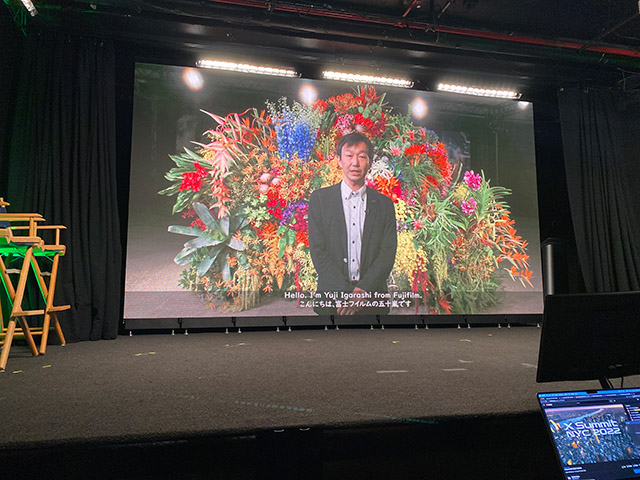
40MP X-Trans sensor! This is the highest-res APS-C sensor and X-Trans sensor ever.
The new sensor is the highest-res APS-C sensor ever and Fujifilm says it rivals full-frame image sensors. It can also record 8K video, up from the 6.2K footage recorded by the X-H2S.
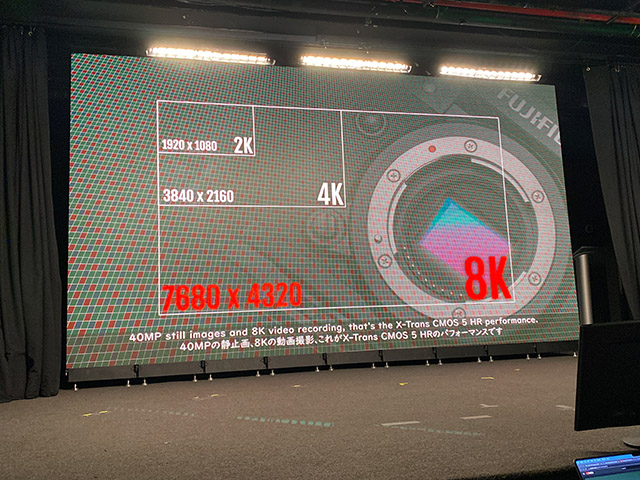
If you need more resolution than this, Fujifilm recommends the GFX series. It's clear that the company is confident that the new X-Trans CMOS 5 HR image sensor can deliver high-resolution performance at the APS-C size. The high-speed stacked sensor in the X-H2S offers speed and performance, while the X-Trans CMOS 5 HR delivers better resolution.
While the X-H2S packs a lot of very impressive video features, the X-H2 is no slouch, especially in the resolution department. Basically, it seems like the main differentiator between the X-H2S and the new X-H2 is speed vs resolution. That said, the X-H2 isn't slow, by any stretch.
The X-H2 supports Pixel Shift Multi Shot, a first in the X Series. The camera uses its precise in-body image stabilization system to slightly shift the sensor -- by about half a pixel (1.5 microns) -- to achieve 4x resolution when shooting. A 40MP sensor x 4 = 160MP without false color.
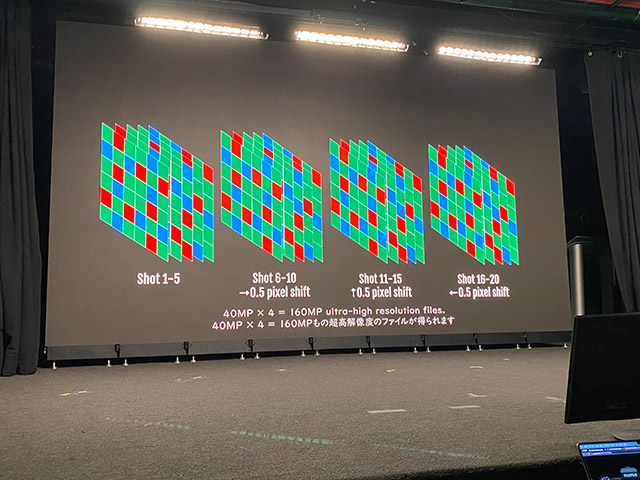
The Pixel Shift mode requires a tripod. The X-H2 is fast, but it's not fast enough to produce a handheld muti-shot image. It's unclear if you can perform this mode in camera or if you must use a connected computer. We will find out more when we meet with Fujifilm following the presentation.
The X-H2 has a new low base ISO of 125 and can be extended down to ISO 64. This applies to stills and video. The camera supports F-Log and F-Log2 to deliver wide dynamic range for video. These shoot at ISO 500 and ISO 1000, respectively.
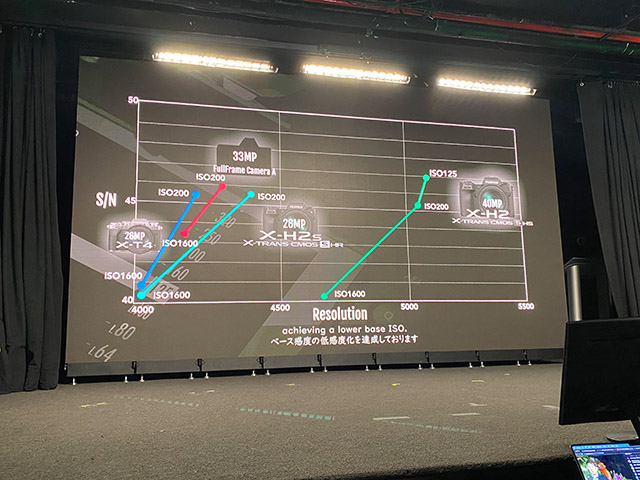
The X-H2 has a super-fast electronic shutter. You can shoot as fast as 1/180,000s, which is much faster than the 1/32,000s top speed on the X-H2S. This means you can shoot large-aperture lenses, like the XF 56mm F1.0, at F1.0 in very bright light. You can also use the fast shutter speed to shoot extremely short-duration images.
The X-H2 uses the same body design, including the EVF, displays and buttons, as the X-H2S. It also includes the same processor.
"Now we have the two sensors that form the basis of the 5th generation X system," said Fujifilm. However, the 5th generation system isn't complete without lenses, especially ones that showcase the high-speed performance of the X-H2S and the high-res performance of the X-H2.
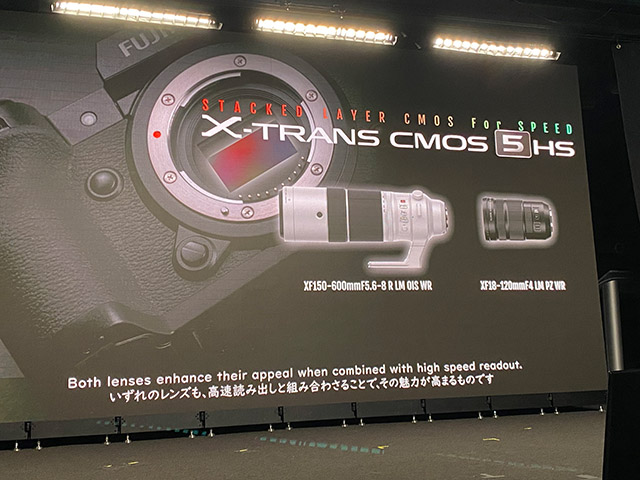
Fujifilm is introducing lenses that bring out the high image quailty of the X-H2. Fujifilm has been preparing for the arrivai of the 40MP sensor since 2021, including lenses like the XF 18mm F1.8 introduced in April 2021.
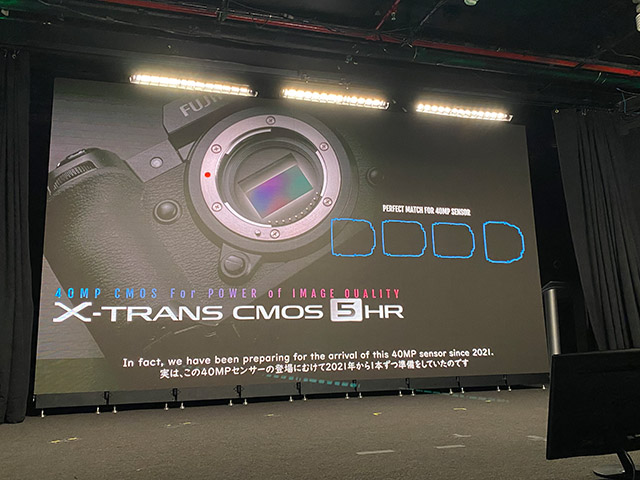
Today, Fujifilm has also introduced a new lens, the XF 56mm F1.2 R WR. It's a brand-new version of the existing XF 56mm F1.2 R. The new version has better image quality, weather resistance, better autofocus and better bokeh. It includes the first 11-bladed aperture diaphraghm in the X Series. It promises circular bokeh even when stopped down to F4 and F5.6.

The new lens has 13 elements, whereas the original has 11. It promises higher image quailty with further minimized aberrations. The lens has a new focus unit group design, too. The new layout ensures that image quailty doesn't fluctuate even when the focus position moves. It has a shorter minimum focus distance. The focus group is heavier, so it required a better, more efficient actuator. The linear motor is new.
A second engineering challenge was achieving cleaner, better bokeh. There's almost no color bleeding at all, resulting in truly stunning bokeh.
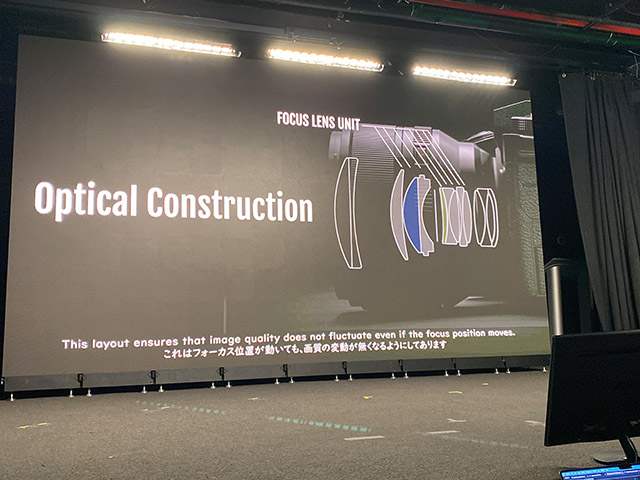
The third development challenge was to make the focus distance shorter. To achieve high image quality at a shorter focus distance, the engineers had to work very hard. As you get closer to the subject, any issues with bokeh would be more apparent, so achieving clean bokeh was important.
There's news for the GFX system as well.
Fujifilm has announced the GF 20-35mm F4 R WR lens. It's the widest GF lens yet, eclisping the GF 23mm F4 lens. Despite being wider and a zoom lens, the GF 20-35mm is similar in size to the GF 23mm F4.
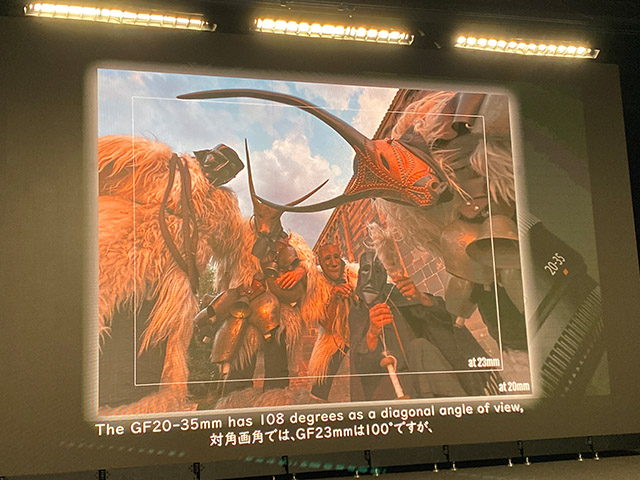
The combination of a super wide-angle lens and the 100MP image sensors of the GFX 100 and GFX 100S is a compelling combination.
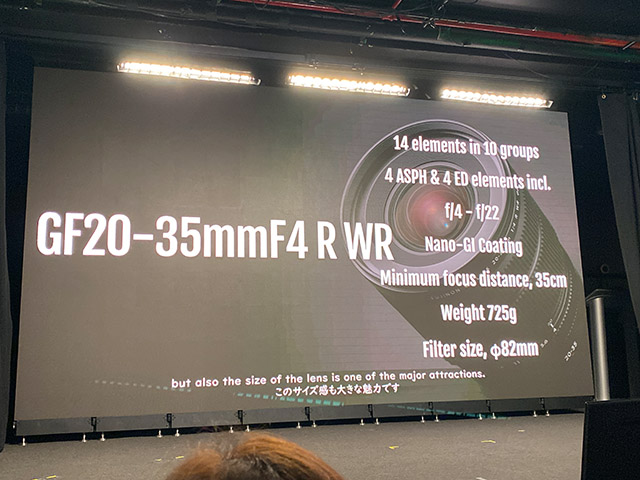
The lens incorporates a new cam design to realize a thinner design and a lightweight design. The GF 20-35mm F4 lens weighs only 725g. Furthermore, it's an internal zoom lens, so the lens doesn't change length as you zoom. Very impressive. Even though it's an F4 lens, you can still use it for astrophotography. The filter diameter is 82mm, the same as the GF 23mm F4 and a few other GF lenses, so it's easy to share filters across multiple GF lenses.
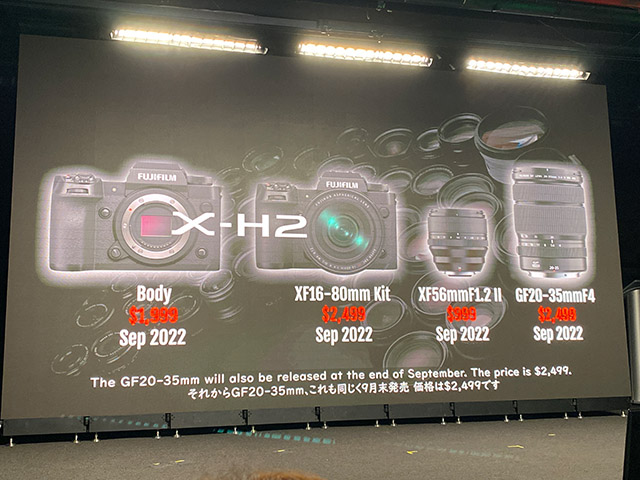
As for availability, the X-H2 will be available at the end of September for $1,999. The XF 56mm F1.2 R WR wil be available at the same time for $999 (this is the same price as the current 56mm F1.2). The GF 20-35mm F4 R WR will be available at the end of September for $2,399.
In a surprise announcement, Fujifilm brought out two new tilt-shift lenses for the GFX system. We knew that a tilt-shift lens was coming, but the second lens is a big surprise! The two tilt-shift lenses are 30mm and 110mm.
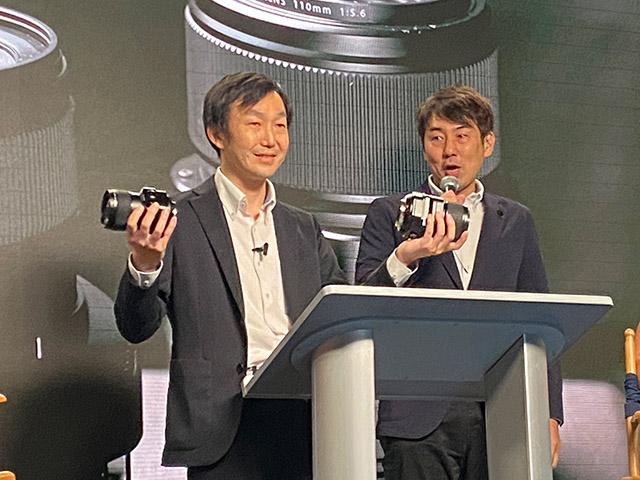
Original story:
Fujifilm has already been very busy these last few months. At the end of May, Fujifilm announced a new flagship camera, the X-H2S. We are working on our hands-on review of the impressive new camera now, but you can see some of our first real-world shots here. At that time, Fuji also announced the new XF 150-600mm F5.6-8 R LM WR OIS telephoto zoom lens. We just received a review sample of this exciting new lens and will have our review published soon.
What will Fujifilm announce today?
